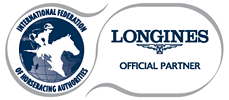Residue Limits - Urine and Plasma
Recommendations for Control of Feed Contaminants and Environmental Substances
Background
Following the meeting of the Advisory Council on Equine Prohibited Substances and Practices in September 2012, the Advisory Council recommended a modification to Clause 19 of the Article 6A of the International Agreement on Breeding, Racing and Wagering to allow laboratories of signatory countries the option to control certain contaminants and environmental substances through the use of internationally agreed residue limits. This recommendation was approved by the Executive Council of the International Federation of Horseracing Authorities (IFHA) and the final bullet point of Clause 19 of Article 6A of the International Agreement states:
19. The aim of signatory countries is that their laboratories:
- • Control the detection of certain environmental substances through the application of internationally harmonised residue limits which have been recommended by the IFHA's Advisory Council on Equine Prohibited Substances and Practices and selectively adopted by the relevant signatory countries.
Dr Yves Bonnaire, one of the representatives of the Association of Official Racing Chemists (AORC) on the Advisory Council, presented on this topic at the General Assembly of the IFHA in October 2013. The purpose of this presentation was to update member countries of the IFHA on this topic and advise them of the initiative being undertaken by the Advisory Council to harmonise the control of these substances.
The presentation suggested a list of substances that could be controlled, at the screening stage, through the application of harmonised residue limits and proposed some possible residue limits commonly in use by a number of racing authorities throughout the world. Dr Bonnaire's presentation was circulated to all members of the AORC and the International Group of Specialist Racing Veterinarians (IGSRV) for comment; only five comments were received. Of the residue limits proposed, only that for scopolamine was questioned and this was subsequently adjusted in line with the comments.
The topic was discussed at the Advisory Council meeting in December 2013 and three substances were removed from the original list proposed by Dr Bonnaire, camphor, menthol and arsenic. The modified list of eight substances and their recommended residue limits was presented at the Opening Business Session of the International Conference of Racing Analysts and Veterinarians (ICRAV) at Mauritius in September 2014. At the Closing Business Session of ICRAV, the substances and proposed residue limits were discussed on a substance by substance basis and agreed by the delegates of ICRAV (members of AORC, IGSRV and other representatives of national racing Authorities).
Guidelines for Control of contaminants and environmental substances
The IFHA recommends that contaminants and environmental substances are controlled at the screening level in the same manner as International Screening Limits. See https://ifhaonline.org/Default.asp?section=IABRW&area=1
The IFHA recommends the following internationally agreed residue limits.
| Feed Contaminant | International Residue Limit (in urine)#
|
| Caffeine | 50 ng/mL |
| Theophylline | 250 ng/mL |
| Atropine | 60 ng/mL |
| Scopolamine | 60 ng/mL |
| Morphine (Total) | 30 ng/mL |
| Bufotenine | 10 ug/mL |
| DMT | 10 ug/mL |
| Hordenine | 80 ug/mL |
| Theobromine | 2000 ng/mL |
| Methylsulfonylmethane (MSM) | 1200 ug/mL |
| Dimethyl sulfoxide (DMSO) | 15 ug/mL |
| Feed Contaminant | International Residue Limit (in plasma) |
| Theobromine | 300 ng/mL |
| Caffeine | 20 ng/mL |
| Dimethyl sulfoxide (DMSO) | 1000 ng/mL |
# These refer to the free and conjugated concentrations unless indicated otherwise.
* Conjugated substances like morphine glucuronides can be difficult to hydrolyse.
International Residue Limits are detection limits agreed following input by international consensus and are conveyed by instruction from racing authorities to their laboratories. The residue limits are simply detection limits to be used by laboratories when screening for certain contaminant or environmental substances as instructed by the authorities; they are not international thresholds. When the screening procedure indicates the residue limit, in either urine or plasma, has been exceeded, all that is required is qualitative confirmatory analysis (usually by mass spectrometry) to confirm the presence or absence of the prohibited substance. Quantification is not required.



